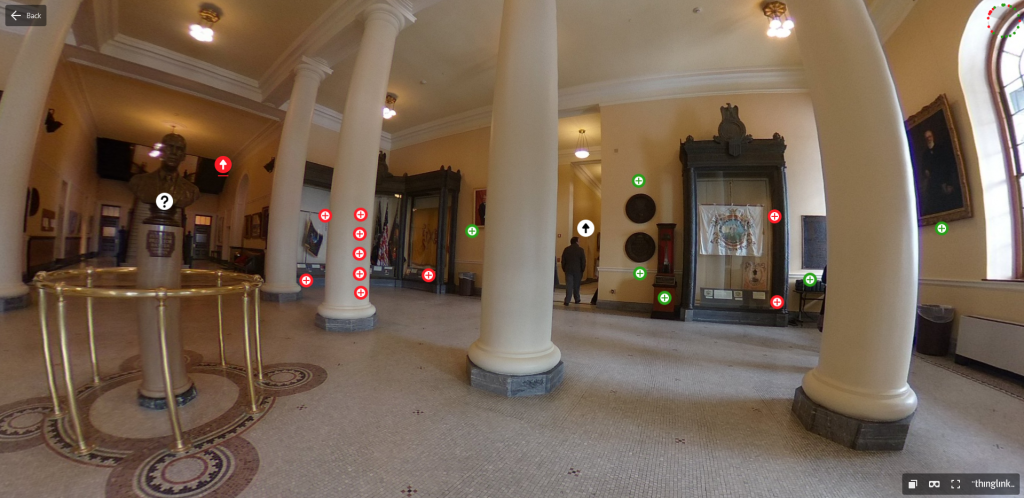The new year has arrived, and now is the perfect time to try out new tools and techniques in your course! If your new year’s resolution involved presenting dynamic, interactive course material or encouraging your students to experiment with a new technological tool, then read on to learn about how to utilize ThingLink to enrich your course this semester.
What is ThingLink?
ThingLink allows you to digitally annotate images and videos with text, photos, external web content, and more. The tool is free and simple to master, and it produces interactive materials that allow for deeper learning. Projects completed with ThingLink include virtual tours, curated digital displays, and more. It is a freemium tool, meaning that the basic model is free to use. For a great example of ThingLink’s functionality, check out this virtual tour of the Maine Statehouse.

What can I do with ThingLink?
Your students can use ThingLink to produce interactive, multimedia projects. Because of its flexibility, this tool can be used in any discipline for a project on any topic. Each project is based on an image or video, which students can then tag with multimedia components. Possible projects include:
- Interactive posters and presentations
ThingLink allows you to use any image or video as a background for your project, meaning that students can annotate web graphics, illustrated diagrams, and their own images.
- Mapping projects
ThingLink is similar in some ways to ARC/GIS story mapping software, though it does have more limited functionality. However, ThingLink is easier to use and might be a good alternative for smaller-scale story mapping projects.
- Virtual tours
There are tagging systems specific to tours in ThingLink, and the system is compatible with virtual reality systems if you are feeling daring!
ThingLink is also useful for instruction. The following features may be useful to you as you create course material:
- Explore the work of others
Users are able to make their work public, meaning that you can use materials as inspiration or to supplement your instruction.
- Interactive course readings
If you’re looking for a way to engage your students beyond text-based course readings, try using ThingLink to annotate images or videos for use in your course. These projects can then be shared with your students through a web link which can be placed in your Moodle site.
If you’d like assistance with setting up a ThingLink account or incorporating this tool into your class, contact the Instructional Technology Team in Shain Library.
